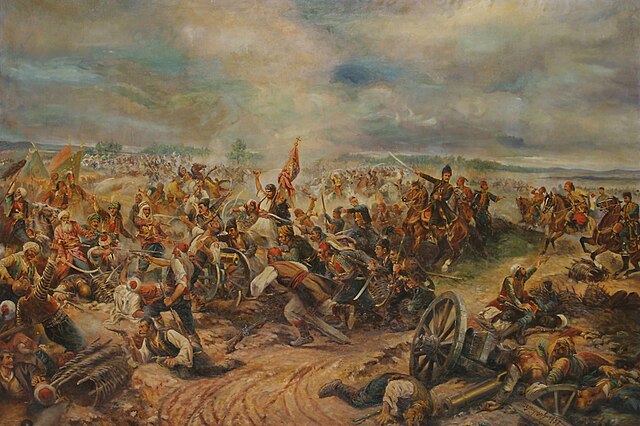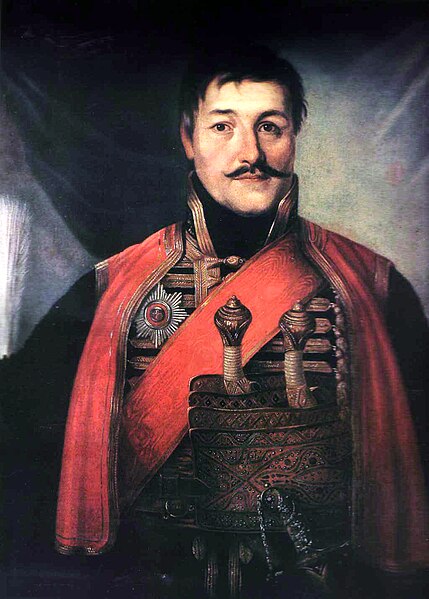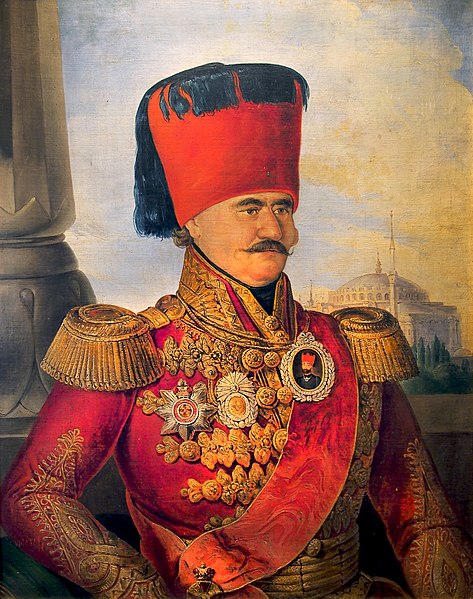The Second Serbian Uprising was the second phase of the Serbian Revolution against the Ottoman Empire, which erupted shortly after the re-annexation of the country to the Ottoman Empire in 1813. The occupation was enforced following the defeat of the First Serbian Uprising (1804–1813), during which Serbia existed as a de facto independent state for over a decade. The second revolution ultimately resulted in Serbian semi-independence from the Ottoman Empire. The Principality of Serbia was established, governed by its own parliament, constitution and royal dynasty. De jure independence, however, was attained in 1878, following the decisions of the Congress of Berlin.
The Takovo Uprising (1889), by Paja Jovanović
The Uprising at Takovo, by Vinzenz Katzler, 1882
The Uprising at Takovo, by Đura Jakšić, 1876–78
The Serbian Revolution was a national uprising and constitutional change in Serbia that took place between 1804 and 1835, during which this territory evolved from an Ottoman province into a rebel territory, a constitutional monarchy, and modern Serbia.
Battle of Mišar (1806), painting by Afanasij Šeloumov
Karađorđe Petrović (Black George) leader of the First Serbian Uprising
Miloš Obrenović, leader of the Second Serbian Uprising and the first Prince of Serbia
Constitution of 15 February 1835.







